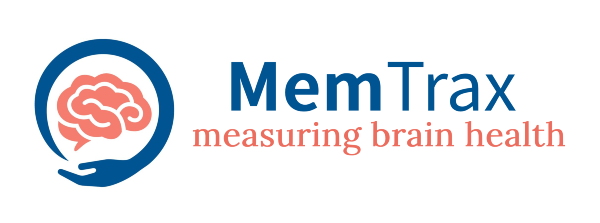Alzheimer’s Speaks Part 4 – About the MemTrax Memory Test
Welcome back to the blog! In part 3 of the “Alzheimer’s Speaks Radio Interview,” we explored the ways people currently detect dementia and why that needs to change. Today we will continue the dialogue and explain the history and development of the MemTrax test as well as the importance for effective development. Please read along as we provide you information directly from the doctor that created MemTrax and has dedicated his life and career to researching and better understanding Alzheimer’s disease.
“We can get three different measures and each one gives different indications of what kind of difficulties you might have.” -Dr. Ashford
Lori :
Dr. Ashford could you tell us a little bit more about MemTrax? How does it work, what is the process?
Dr. Ashford :
Like I said the difficulty I had with testing people is; you ask them to remember something, if you wait a minute after a distraction, they cant remember it. What we figured out is the way to interleaving the items to remember with the memory challenges “can you remember what you just saw?” The way we have done it with many audiences we have come up with a general outline where we provide 25 very interesting pictures. The pictures are very nice and we have chosen the pictures to be things that would be very interesting to look at.

Peaceful, Beautiful, High Quality MemTrax Images – Looks Like a Brain Neuron!
The trick is, we show you a picture, then we show you another picture, and we show you a third picture, and is that third picture one that you have seen before? The test can be very easy or very difficult depending on how similar the pictures are. We basically set it up so we have 5 sets of 5 pictures so we might have 5 pictures of bridges, 5 pictures of houses, 5 pictures of chairs and things like that. You cant simply name something and remember it. You have to actually look at it, name it, and have some encoding of the information in the brain. So you see a series of pictures and you see some that are repeated and you have to identify the repeated pictures by somehow indicating that as quickly as you can. We measure response time and recognition time so you can press the space bar on a keyboard, press the touch screen on an iPhone or Android, we set it up so it works on any particular platform that is computerized. We can measure your reaction time, your percent correct, and the percent of items you have falsely identified that you haven’t seen before. We can get three different measures and each one gives different indications of what kind of difficulties you might have. We show the pictures for 3 or 4 seconds unless you say you have seen it before, than it just jumps on to the next one. In less than 2 minutes we can get a much more accurate assessment of your memory function than you can get with the tests you take up in Minnesota.
Lori :
Well that is nice to know. What does the product run in terms of cost to someone?
Curtis :
Right now it is setup on an annual subscription based model. Yearly subscriptions are $48.00. You can sign up and we want people to take it once a week or once a month to get an overall idea of how their brain health is doing.
We are really excited we got to launch our new website, we have been working on this since 2009. Back in college when I graduated in 2011 I was finishing the prototype website and it started to really take off and get some solid traction. We are focused on making it user friendly: simple, easy to understand, and available on lots of different devices. With every one being everywhere we wanted it to work on iPhones, Androids, Blackberries, and any type of mobile device possible because that’s what people are using.
Lori :
Keeping it simple and user friendly is so important and for whatever reason it seems to be underrated in the scheme of things when they are building things they forget the audience that they are dealing with and I am glad to hear that you try to keep it user friendly. I think it is a critical piece that so many people developing sites forget about, who their end user is and why they are there in the first place, to me is just a massive mistake that is made repeatedly.
2 Comments
Leave a Comment
You must be logged in to post a comment.



In simple terms, what score / speed would be considered as mild cognitive impairment
Hello,
Sorry for my late response, I have decided to allow posting on the website. We are working on a percentile graph to show people after their results are calculated, I hope that it will be useful for you.
That question is something we are taking time to answer because we want to back it up with data! Please review: https://memtrax.com/montreal-cognitive-assessment-research-memtrax/
In simple terms I would say anything below 70% performance and above 1.5 second reaction speed.